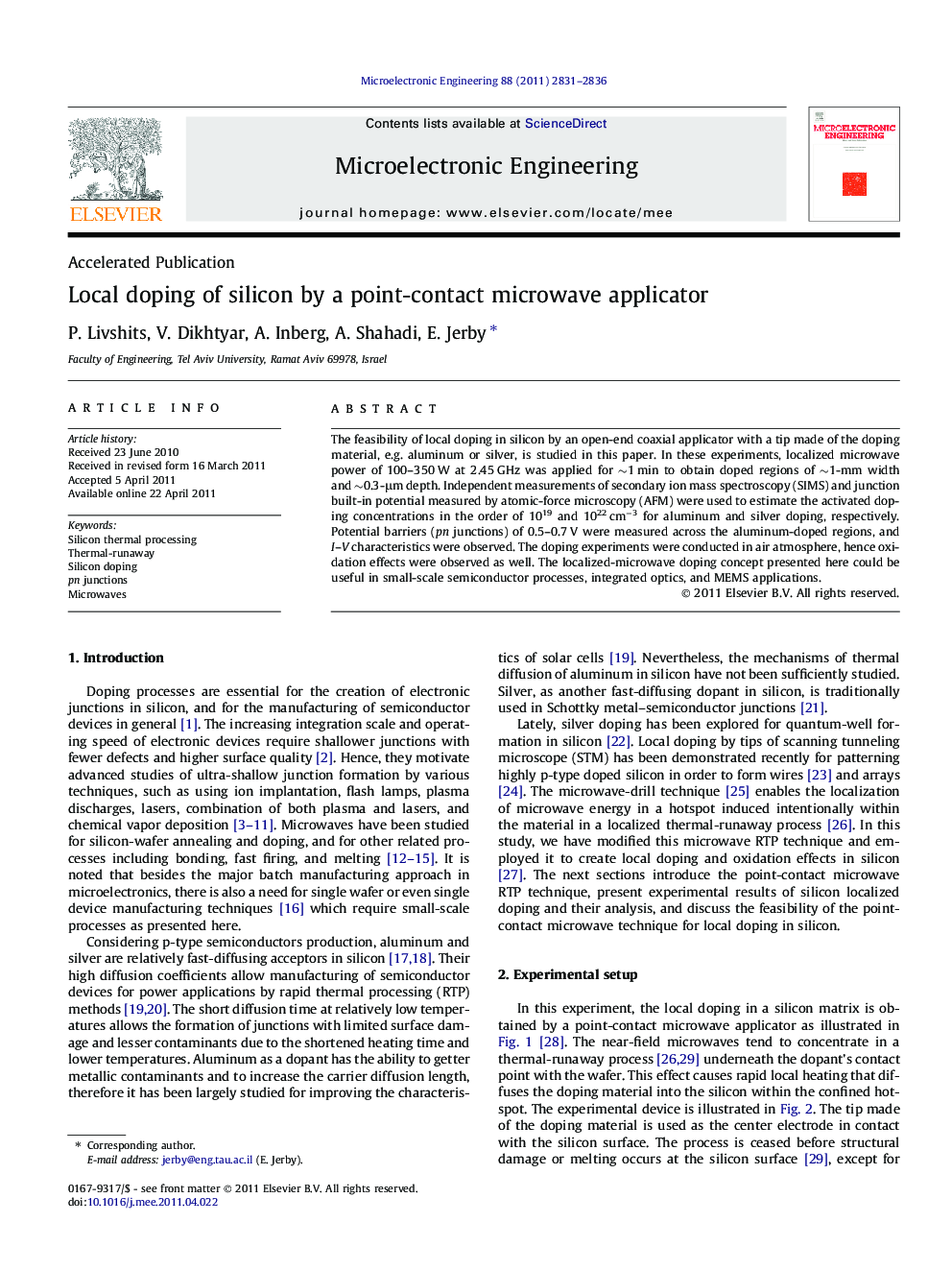| Article ID | Journal | Published Year | Pages | File Type |
|---|---|---|---|---|
| 539646 | Microelectronic Engineering | 2011 | 6 Pages |
The feasibility of local doping in silicon by an open-end coaxial applicator with a tip made of the doping material, e.g. aluminum or silver, is studied in this paper. In these experiments, localized microwave power of 100–350 W at 2.45 GHz was applied for ∼1 min to obtain doped regions of ∼1-mm width and ∼0.3-μm depth. Independent measurements of secondary ion mass spectroscopy (SIMS) and junction built-in potential measured by atomic-force microscopy (AFM) were used to estimate the activated doping concentrations in the order of 1019 and 1022 cm−3 for aluminum and silver doping, respectively. Potential barriers (pn junctions) of 0.5–0.7 V were measured across the aluminum-doped regions, and I–V characteristics were observed. The doping experiments were conducted in air atmosphere, hence oxidation effects were observed as well. The localized-microwave doping concept presented here could be useful in small-scale semiconductor processes, integrated optics, and MEMS applications.
Graphical abstractFigure optionsDownload full-size imageDownload as PowerPoint slideHighlights► A modified microwave drill is used as an open-end applicator to locally dope silicon. ► The center-electrode tip of the microwave drill was made of the doping material. ► Rapid local diffusion was achieved of either aluminum or silver into the silicon. ► Dopants’ penetrations were controlled by the microwave power and exposure duration. ► Potential barriers across the doped regions and diode-like behaviors were obtained.
